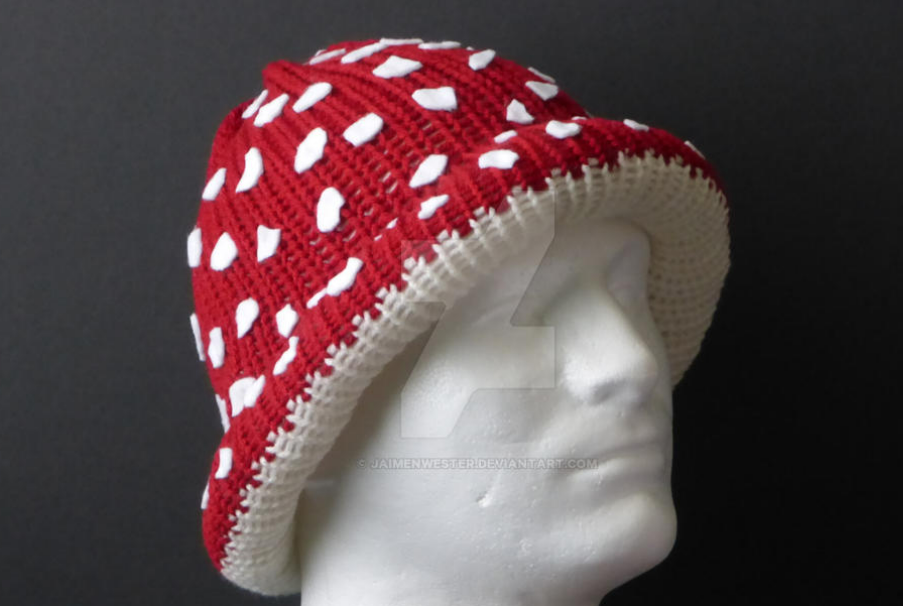Mushroom hats are whimsical and eye-catching accessories that can add a touch of fantasy to your wardrobe. Whether you're a fan of fairy tales or simply looking for a unique fashion statement, creating your very own mushroom hat can be a delightful and rewarding DIY project. In this step-by-step guide, we will explore how to make a mushroom hat that is not only stylish but also eco-friendly.
Why Mushroom Hats?
Mushroom-themed fashion has gained popularity due to its eco-conscious and sustainable appeal. These hats are not only cute but also a way to promote sustainable fashion by using biodegradable hat materials.

Materials You'll Need
Before diving into the crafting process, let's gather the materials required to make your mushroom hat:
1. Mushroom Hat Template
- Find or create a mushroom hat template that suits your style and head size.
2. Felt Fabric
- Choose eco-friendly felt fabric in various mushroom-inspired colors like red, white, or brown.
3. Fabric Scissors
- Sharp fabric scissors are essential for precision cutting.
4. Craft Glue
- Opt for non-toxic craft glue to ensure the safety of your finished product.
5. Needle and Thread
- A sturdy needle and thread will be used for sewing and attaching embellishments.
6. Embellishments
- Gather decorative elements like beads, sequins, or fabric paint to personalize your mushroom hat.
7. Elastic Band
- An elastic band will help secure the hat on your head comfortably.
Step-by-Step Guide
Step 1: Prepare Your Template
- Start by laying out your mushroom hat template on the felt fabric.
- Trace around the template using a fabric pen, then carefully cut out the mushroom shape.
Step 2: Assemble the Hat
- Fold the mushroom shape in half to create the hat's cap.
- Use craft glue to secure the folded edges, leaving the bottom open for your head.
Step 3: Add Embellishments
- Get creative! Decorate your mushroom hat with beads, sequins, or fabric paint to give it a unique and whimsical appearance.
Step 4: Attach the Elastic Band
- Measure the elastic band around your head, ensuring a snug fit.
- Sew the elastic band securely to the inside of the hat's bottom edge.
Tips for a Fantastic Mushroom Hat
1. Experiment with Colors
- Mix and match different felt colors to create eye-catching mushroom patterns.
2. Go Wild with Embellishments
- Don't be afraid to let your creativity run wild when decorating your hat.
3. Explore Different Mushroom Shapes
- Create a variety of mushroom hat styles, from classic to whimsical.
Conclusion
Making a mushroom hat is not only a fun DIY project but also a way to express your style while promoting sustainable fashion. With a few materials and a touch of creativity, you can craft a one-of-a-kind mushroom hat that will turn heads and spark conversations.
Now, let's answer some frequently asked questions about mushroom hats:
![]()
FAQs
Q1: Are mushroom hats suitable for all ages?Ans: Yes, mushroom hats can be enjoyed by people of all ages. They add a playful touch to any outfit.
Q2: Can I wash my mushroom hat?
Ans: It's best to spot clean your mushroom hat to preserve its shape and colors.
Ans: The crafting process can vary, but you can expect to spend a few hours on this project.
Q4: Can I sell mushroom hats I make?
Ans: Absolutely! Many crafters sell their handmade mushroom hats online or at local markets.
Q5: Where can I find eco-friendly felt fabric?
Ans: Look for eco-friendly felt fabric at craft stores or online shops that specialize in sustainable materials.


0 comments